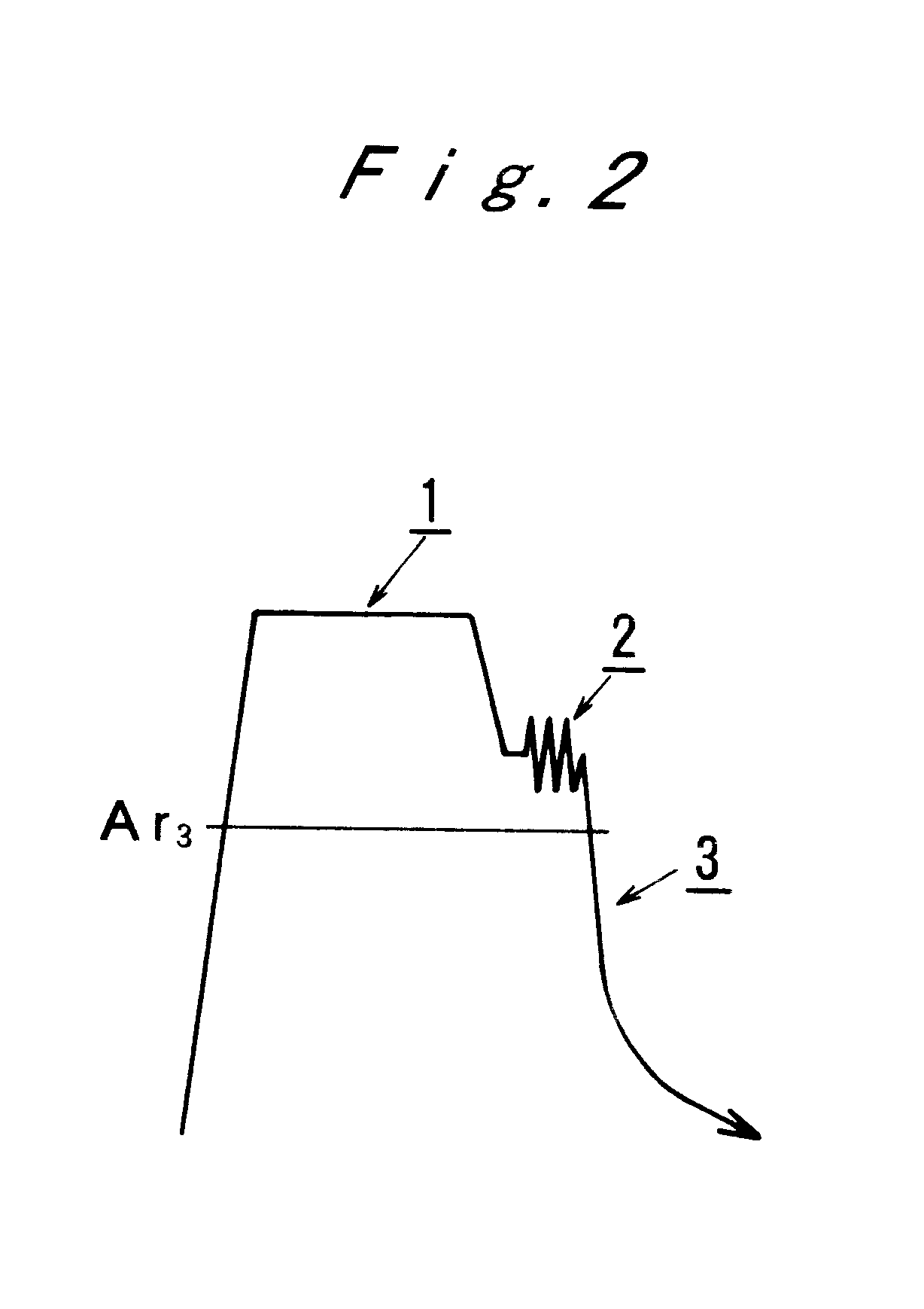High toughness steel and a method for manufacturing the same
a technology of high toughness steel and manufacturing method, which is applied in the field of high toughness steel and a manufacturing method for the same, can solve the problems of increasing the energy required for a grain boundary fracture, brittle fracture, and grain boundary fracture,
- Summary
- Abstract
- Description
- Claims
- Application Information
AI Technical Summary
Problems solved by technology
Method used
Image
Examples
example 1
Steel having a composition of Fe, 0.35% of C, 1.5% of Mn and 0.5% of Si in terms of % by weight was made into martensite by the process consisting of the following steps of a-c.
a. heated by electricity at the rate of 5.degree. C. / second up to 1,100.degree. C.;
b. kept at 1,100.degree. C. for 60 seconds;
c. cooled down to 700.degree. C. at the rate of 10.degree. C. / second;
d. subjected to an anvil compressing to 50% at 10 / second; and
e. cooled with water.
As shown in FIG. 6, in the resulting steel, the areas of not less than 90% of the prior-austenite grain boundary seen from a vertical plane had fine wavy ups and downs. Each cycle and amplitude of said ups and downs were not more than 2 .mu.m and not less than 400 nm, respectively.
Incidentally, the prior-austenite grain boundary is the area as shown by an arrow in FIG. 6.
Tensile strength of the resulting steel was 1,397 MPa while ductile-brittle transition temperature thereof was 0.degree. C.
example 2
A tempered martensite steel having a composition of Fe, 0.35% of C and 2.0% of Mn in terms of % by weight was manufactured by 3 process consisting of the following steps a-h.
a. heated by electricity at the rate of 5.degree. C. / second up to 1,100.degree. C.;
b. kept at 1,100 .degree.C. for 60 seconds;
c. cooled down to 750.degree. C. at the rate of 10.degree. C. / second;
d. subjected to an anvil compressing to 50% at 10 / second;
e. cooled with water;
f. subjected to an induction heating at the rate of 200.degree. C. / second up to 450.degree. C.;
g. kept at 450.degree. C. for 15 seconds; and
h. cooled at the rate of about 50.degree. C. / second by blowing with He.
As shown in FIG. 8, in the resulting steel, prior-austenite grain boundary and its triple point which are noted in the conventional tempered martensite steel were not confirmed.
Further, as shown in FIG. 9, the prior-austenite grain boundary had fine wavy ups and downs when seen from a vertical plane. Each cycle and amplitude of said ups ...
PUM
| Property | Measurement | Unit |
|---|---|---|
| Length | aaaaa | aaaaa |
| Fraction | aaaaa | aaaaa |
| Fraction | aaaaa | aaaaa |
Abstract
Description
Claims
Application Information
 Login to View More
Login to View More - R&D
- Intellectual Property
- Life Sciences
- Materials
- Tech Scout
- Unparalleled Data Quality
- Higher Quality Content
- 60% Fewer Hallucinations
Browse by: Latest US Patents, China's latest patents, Technical Efficacy Thesaurus, Application Domain, Technology Topic, Popular Technical Reports.
© 2025 PatSnap. All rights reserved.Legal|Privacy policy|Modern Slavery Act Transparency Statement|Sitemap|About US| Contact US: help@patsnap.com



